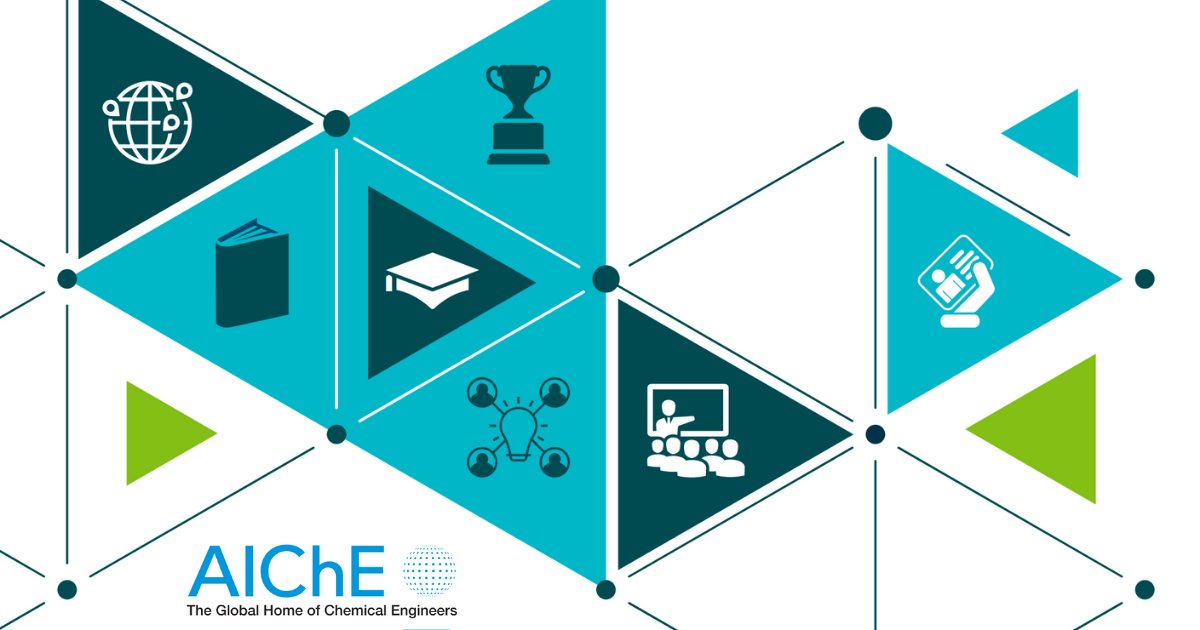| Day 1: Wednesday, September 24th, 2025 |
| 8:30 AM |
6:00 PM |
Badge Pick-Up & On-site Registration |
| 8:30 AM |
9:00 AM |
Morning Coffee & Networking |
| 9:00 AM |
9:15 AM |
Welcome Remarks: Venkat Srinivasan, ACCESS & LENS Consortium |
| 9:15 AM |
12:25 PM |
Session 1: Securing the Energy Storage Materials Supply |
| 9:15 AM |
9:50 AM |
Keynote: Ryan Melsert, American Battery Technology Company (ABTC) |
| 9:50 AM |
10:15 AM |
Francois Henry, Superior Graphite
"The way to use a proven, agile and efficient graphitization technology to produce domestic active anode material for Lithium-Ion batteries."
Read more
Superior Graphite operates a continuous graphitization technology in Hopkinsville KY since 1977. The presentation shows how this found its place in the synthesis of artificial graphite for lithium-ion batteries.
Read less
|
| 10:15 AM |
10:40 AM |
Yan Wang, Worcester Polytechnic Institute
"Recycled cathode and anode materials for full cells"
Read more
With the exponentially growing demand for energy storage devices, the Li-ion battery (LIB) industry blooms rapidly, which leads to a dramatic increase in spent LIBs and the fast evolution of battery materials, leading to significant environmental and supply chain challenges. While the recycling of cathode materials is widely studied, graphite as the anode material has always been discarded due to its relatively low value and irreversible damage. Moreover, concerns about scalability, environmental feasibility, and economic feasibility prevent the battery recycling method from commercialization. In this work, we propose a close-loop LIB recycling method, recovering the cathode and anode materials with an overall efficiency of over 95%. Through the novel hydrometallurgical-based process, the recovered cathode and anode deliver comparable capacity and superior stability towards the commercial materials. Perfected by the innovative anode recovery process and demonstrated through the cost analysis, the proposed LIB recycling method not only possesses a technical feasibility of producing advanced recovered cathode and anode materials but is of higher profitability compared to traditional recycling methods, potentially offering a stride towards environmentally friendly and economically viable LIB recycling solutions.
Read less
|
| 10:40 AM |
11:10 AM |
Break |
| 11:10 AM |
11:35 AM |
Garrett Lau, Lilac Solutions, Inc.
"Modern Lithium Extraction for a Domestic Supply Chain"
Read more
Lithium is a critical mineral underlying the batteries that power grid-scale energy storage, electric vehicles, data center reliability, and other applications. However, supplies remain largely under foreign control due to underutilization of domestic resources, technical challenges associated with the low-grade of domestic resources, and low domestic refining capacity. New technology that enables low-cost extraction and production of lithium from domestic resources is key to building a US supply chain for batteries.
Lilac Solutions has developed a proprietary ion exchange (IX) technology capable of efficiently extracting lithium from a wide range of aqueous resources with vastly different and challenging chemistries. These sources span high-grade salar brines with > 2 g/L of Li to low-grade surface water resources with < 100 mg/L of Li and challenging chemistries that render incumbent lithium recovery methods unviable. Such challenging chemistries are prevalent in domestic resources, including salt lakes and industrial waste such as oil & gas produced water. Lilac’s technology enables economical lithium extraction from these low-grade resources, delivering a path to a commercially viable domestic supply chain of lithium.
This presentation will provide an overview of Lilac’s IX performance with various lithium resources across a range of brine chemistries, including domestic salt lake and oil & gas produced water. This data includes:
• Key technical performance indicators, such as lithium recovery (> 90%), impurity rejection (> 99.9%), product purity (battery-grade), and reagent consumption,
• Environmental impact indicators, including water intensity and physical footprint,
• Economic performance indicators, developed through rigorous FEL engineering studies validated by 3rd parties.
This data demonstrates how Lilac’s IX technology can produce lithium with competitive economics, while exceeding the technical and environmental performance of incumbent processes. Lilac’s technology development and production is vertically integrated in the US, minimizing FEOC concerns and geopolitical risks to its projects.
Read less
|
| 11:35 AM |
12:00 PM |
Sabine Gallagher, Argonne National Lab
“Techno-Economic and Process Impact Analysis of Different Recycling Technologies” |
| 12:00 PM |
12:25 PM |
Vikram Ravi, National Renewable Energy Laboratory (NREL)
"Systematic Evaluation of Supply Chains for Lithium-ion Battery Manufacturing and Recycling"
Read more
The market for lithium-ion batteries (LIBs) used in transportation and other end-use sectors is expected to expand rapidly over the next decades. As early-generation LIBs approach end-of-life (EOL), the combination of surging battery demand and supply chain constraints emphasize the need to better understand EOL LIB recycling. Under current conditions—characterized by cobalt-rich chemistries, maturing recycling technologies, and favorable material prices—the recovery of high-value materials has become economically viable. However, the LIB manufacturing and recycling ecosystem is rapidly evolving including changes such as emerging battery chemistries, advances in recycling technologies, and the deployment of sophisticated battery diagnostics that enable second-life applications are reshaping the landscape. In this work, we leverage NREL’s LIBRA model to explore how factors such as changing battery chemistries, AI-enabled manufacturing, and advanced logistics optimization can influence the U.S. lithium-ion battery recycling supply chains.
Read less
|
| 12:25 PM |
1:30 PM |
Lunch |
| 1:30 PM |
4:45 PM |
Session 2: Accelerating the Transition from Lab to Fab |
| 1:30 PM |
2:05 PM |
Keynote: Sriram Iyer, QuantumScape
"Updates on Lithium-Metal Battery Technology for Electric Vehicle Applications"
Read more
The next generation of energy storage is being driven by breakthrough solid-state battery technology that promises to overcome the fundamental limitations of conventional lithium-ion systems. Solid-state lithium-metal batteries have the potential to enable longer range, faster charging, and enhanced safety through advanced ceramic separator technology.
To accelerate the adoption of solid-state battery technology in vehicles, various approaches to commercialization are being explored, including non-exclusive licensing models that can build global ecosystems around proprietary technology platforms. Many players have shown promising proofs of concept, but the major challenge is scaling the technology. In this session, Sriram Iyer, Senior Director at QuantumScape, will discuss recent developments in solid-state lithium-metal battery technology for automotive applications and explore the potential benefits these batteries offer for electric vehicles and other applications.
Read less
|
| 2:05 PM |
2:30 PM |
Girish Gopalakrishnan, Elevated Materials
"Manufacturing of Ultra-Thin Lithium Metal for Next-Generation Lithium Metal Anode and Lithium-Ion Batteries"
Read more
Lithium metal anodes are widely recognized as a key enabler for next-generation rechargeable batteries due to their high theoretical capacity and low electrochemical potential. However, their practical implementation is limited due to scaling roll to roll deposition technologies, surface reactivity, and dendrite formation in the device. Achieving stable electrochemical performance requires, high purity lithium films within situ surface coatings. Li Film roughness and morphology, thickness uniformity are critical parameters needed to accelerate the road map. Thin substrates choice (e.g., Cu, Graphite anode, Silicon anode, etc.,) is desired for reducing inactive components and help to increase the energy density of the cell. Handling thin substrates and reactive films such as Li needs to overcome challenges such as fragility, reactivity, dexterity. Reducing the defects in the film and improving the quality is a must for adopting this technology for commercialization.
At Elevated Materials, we are developing scalable roll-to-roll processing technology for ultra-thin lithium foils. Our platform produces continuous films with thicknesses of 1–20 m, widths exceeding 800 mm, and uniform surface characteristics over longer lengths.
In the context of all-solid-state batteries, interface engineering between lithium and solid electrolytes is essential for long-term stability. Elevated Materials’ deposition platform enables integrated coatings without breaking the vacuum to produce highest quality Lithium metal The talks highlight some of our advances in manufacturing ultra-thin lithium for high-energy-density lithium metal and solid-state battery technologies.
Read less
|
| 2:30 PM |
2:55 PM |
Kevin Wujcik, Blue Current Inc.
"Development of Solid State Batteries with Silicon Anodes for Electric Vehicle Applications"
Read more
Blue Current has pioneered the development of fully dry solid-state batteries with silicon anodes and is now scaling pouch cell production at its pilot manufacturing facility in Hayward, CA. This technology offers unique technical advantages: energy densities that surpass state of the art lithium-ion cells (>750 Wh/L), high cycle lifetime compared to other high Si-content anodes (over 1,000 cycles with 80% capacity retention at >5x the silicon content of state of the art cells), and inherent safety stemming from its fully dry cell composition. In this presentation, Blue Current will detail technical challenges facing silicon solid state cells and the solutions Blue Current is developing to overcome these challenges. Blue Current’s roadmap for cell production at its 1-2 MWh pilot facility in Hayward, CA will also be discussed.
Read less
|
| 2:55 PM |
3:25 PM |
Break |
| 3:25 PM |
3:50 PM |
Fang Dai, General Motors
"Battery development – From Lab-scale, Fab–scale to manufacture"
Read more
The accelerating growth of consumer electronics and electric transportation has driven an unprecedented demand for Lithium-ion batteries, positioning them as a cornerstone of modern energy storage. To meet this demand, gigawatt-scale manufacturing facilities have emerged globally, accompanied by rapid innovation in battery materials, components, and fabrication techniques. This evolution from lab-scale research to industrial-scale production introduces significant challenges in characterization and quality assurance, requiring the adaptation of measurement methodologies across different development stages.
This talk will provide an overview of the industrial development flow for advanced battery technologies, emphasizing the differences between laboratory research and large-scale manufacturing requirements. We will highlight the critical gaps between academic approaches and industrial needs, and discuss how bridging these gaps is essential for translating scientific advancements into scalable, reliable battery production.
Read less
|
| 3:50 PM |
4:15 PM |
Andrea Bowring, Mitra Chem
"Innovating and industrializing LFP-based cathodes"
Read more
Cathode materials significantly impact the performance, cost, and safety of Li-ion batteries for energy storage and transportation. Lithium iron phosphate (LFP) is an attractive chemistry due to its reduced cost, superior safety, and greater supply-chain security. Mitra Chem focuses on the innovation and industrialization of LFP cathode materials in the United States. This presentation will cover how we are pushing the frontier of LFP technology development and scaling on mass-production lines.
Read less
|
| 4:15 PM |
4:40 PM |
Yong Seok Kim, Samsung SDI R&D America
"US Battery Business of Samsung SDI R&D"
Read more
Herein, the US battery business of Samsung SDI will be briefly introduced in terms of manufacturing and Research & Development. In the first part, we will share some company information like annual revenue, total global employees, R&D investment, manufacturing plans etc. In particular, two gigawatt joint ventures with US auto OEMs such as Stellantis and GM in Indiana are under construction, which means Samsung SDI became a part of the US localized battery supplier. In the second part, after this presentation will be talking about core battery R&D technologies like what Samsung is focusing on, the duties and functions of Samsung SDI R&D America located in Boston will be addressed in order to develop them. In technical terms, we will make a presentation about the high Nickel cathode material coated by disordered rock salts structure to improve its cyclability for lithium ion battery and novel gel polymer electrolyte for lithium metal battery with our US close collaborators. In addition, the sulfide-based ASB technology working in HQ will be touched shortly.
Read less
|
| 4:40 PM |
5:00 PM |
Transition Break |
| 5:00 PM |
6:30 PM |
Welcome Reception & Poster Session
Poster Presentations |



















